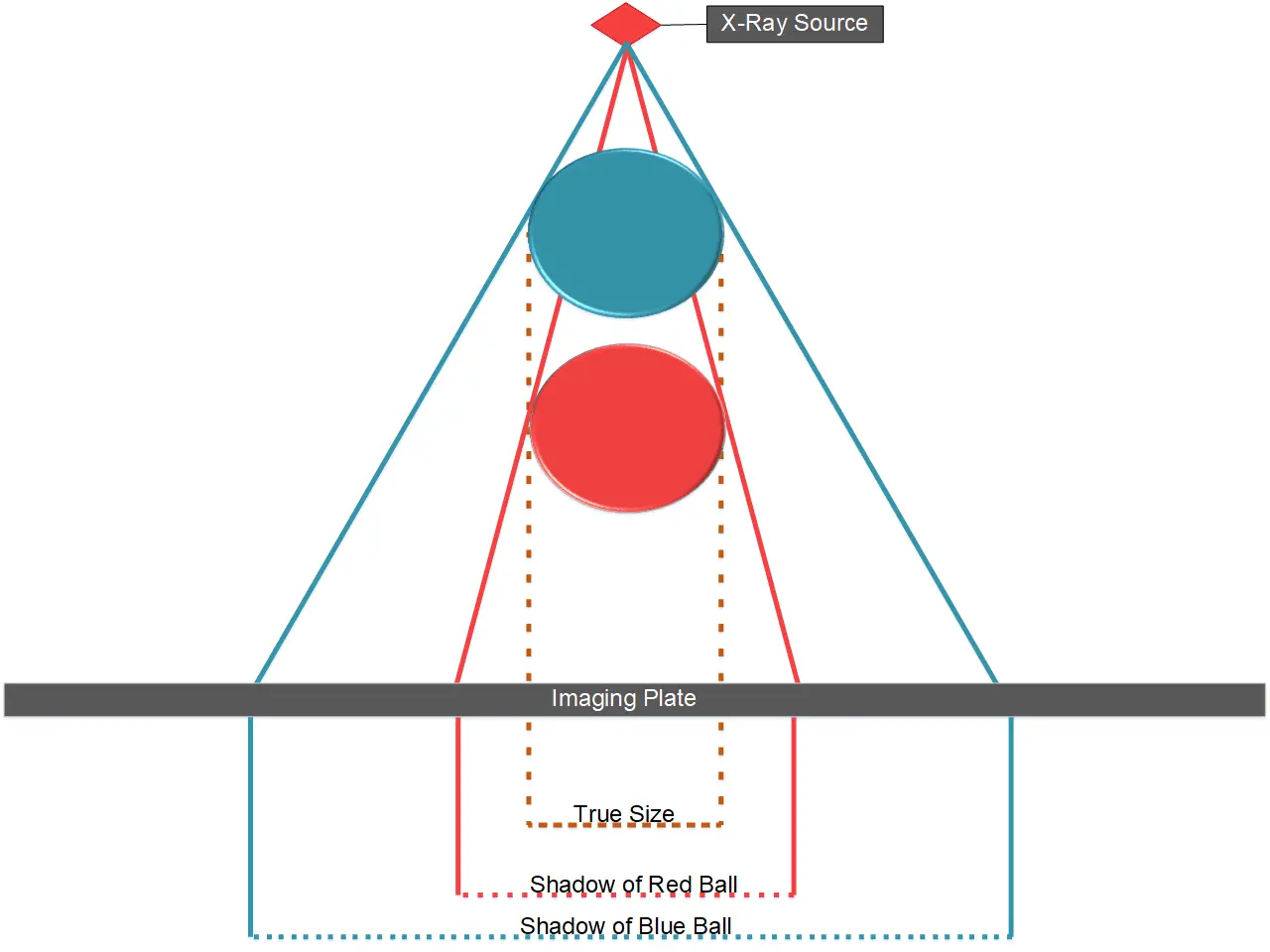Geometric Magnification
For plain radiographs (conventional x-rays), the size recorded on the film is always larger than the size of the object being imaged, due to an effect called geometric magnification. Moreover, as shown in the diagram below, the amount of magnification varies for different objects, depending on their distance from the film, so it is NOT in general possible to “correct” for such magnification without knowing the distance of the object from the film.
The different “objects” can of course be different parts of the same patient, so it is not therefore possible to calculate a calibration factor which would be correct for both the front and back parts of the patient, even in the same exposure.

For some uses it is possible to get calibration at a particular depth by including an object of a known size in the image at the same depth as the object of interest (e.g. a metal ball at about the same distance from the film/detector as a hip joint), but this is very specialised, and even then only applies to that one single depth.